A millennial couple in Austin transformed an old dirty Airstream from 1971 into a modern tiny home. Take a look at how they did it.
Amanda Goh

- A millennial couple in Austin, Texas, bought an empty 1971 Airstream in October 2018 and turned it into a tiny home.
- Interior designer Rose Ballard and architect Paul Suttles spent 18 months converting the 27-foot-long vehicle.
When interior designer Rose Ballard and architect Paul Suttles decided to convert an Airstream into a tiny home, they had never even set foot inside a trailer before.
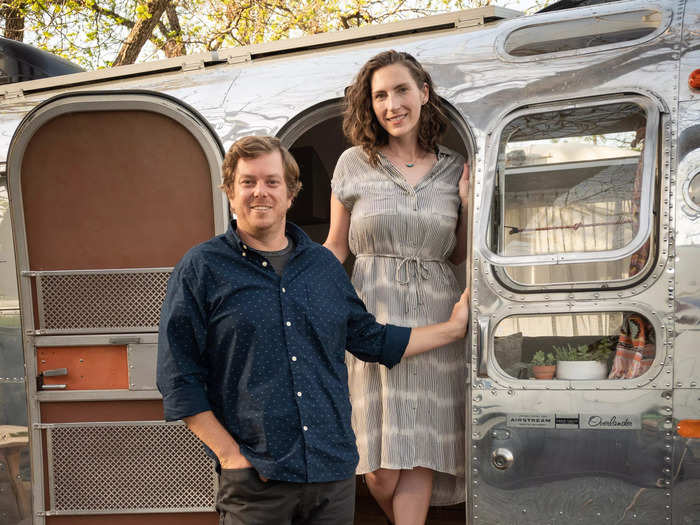
After getting married in 2018, the couple were living in a rental apartment in Austin. They soon decided to get a place of their own.
It was while working on a project with Community First — an Austin-based housing initiative aimed at helping people transition out of homelessness — that the idea of building their own tiny house came to mind.
"We were doing some research, thinking about our next steps, when we thought that maybe this is something we could do," Ballard, an interior designer, told Insider.
But it was only after a visit to a tiny home convention that they finally decided to make it happen.
"It was inspiring, so we started talking about it and drawing out floor plans," Ballard said. They ended up with 30 different floor plans, but all for a more traditional "tiny home". At that point they weren't even considering a trailer.
But when Ballard laid eyes on a decades-old Airstream on Craigslist, she decided that she had to have it. The floor plans went out the window.
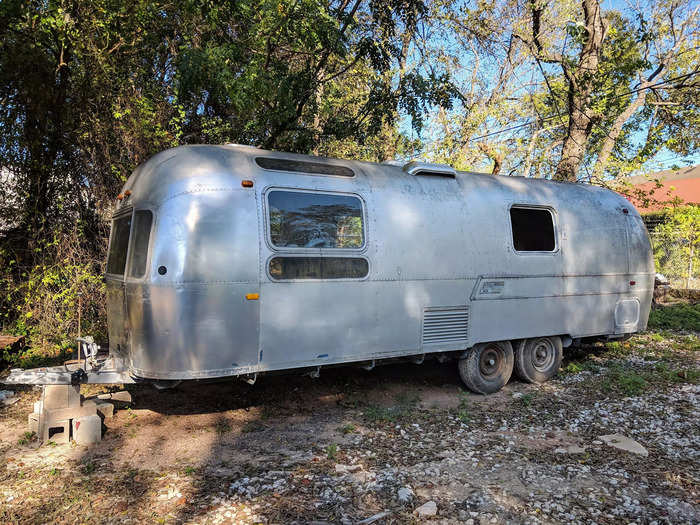
Her husband was on board with her idea and just two weeks later, in October 2018, the vehicle was theirs, Ballard said.
"It sounds crazy, especially since it was going to be our future home, but it was too perfect to pass up," she added.
She estimates that they paid about $4,500 for the Airstream Overlander, which was built in 1971.
"We were kind of naive and that probably helped speed along the decision to get it, but we were stubborn enough to finish the project," Suttles told Insider.
Despite their excitement, the couple knew that the work ahead of them wasn't going to be easy.
The Airstream was in a state of disrepair. Every surface was covered in a thick layer of dirt and grime.
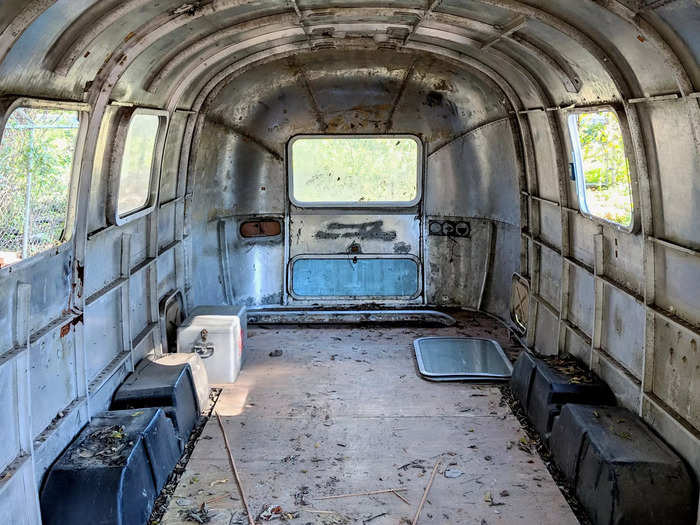
The interiors were completely empty after being gutted by the previous owner. All that was really left of the Airstream was its shell, Ballard said.
Although they were saved from doing a full gutting job, there was still a lot that needed to be done before the vehicle was in a livable condition.
"It turns out just putting the stuff in is a lot more work than you think," she added.
Since the Airstream was much smaller and rounder than what they initially planned for their home to be, the couple had to start designing their home again from scratch.
There were other features about working with an Airstream that they needed to figure out, such as replacing the hundreds of rivets that held the aluminum body of the vehicle together.
As they lacked a garage, the couple ended up renting an outdoor parking lot in an industrial area to complete their project.
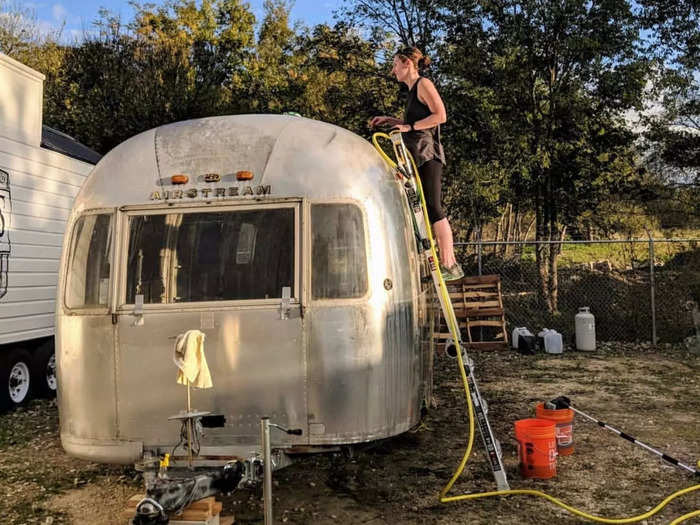
"We had to drive back and forth," Suttles said. "We had a little tiny two-door Civic and we stuffed all our tools in there as there was no proper storage on-site."
The lot was located at the edge of town, and it would take the couple between 15 to 45 minutes to get there depending on traffic, Suttles said.
"If we had been able to do it at home, we probably would've saved months of commuting time," Ballard added.
The first thing that the couple did was review the frame of the Airstream.

During their inspection, the couple realized that the previous owner had replaced a back panel wrongly, allowing water to seep in.
"We had to pull off one whole corner of the back part of the Airstream and put it back in correctly, and that was all in an effort to try to get it watertight," Suttles said.
The couple also needed to clean the layers of dirt that had accumulated over the years before they were able to insulate the inner walls and install their electrical and plumbing systems.
One of the main obstacles that Ballard and Suttles faced was working with the rounded corners of the Airstream.
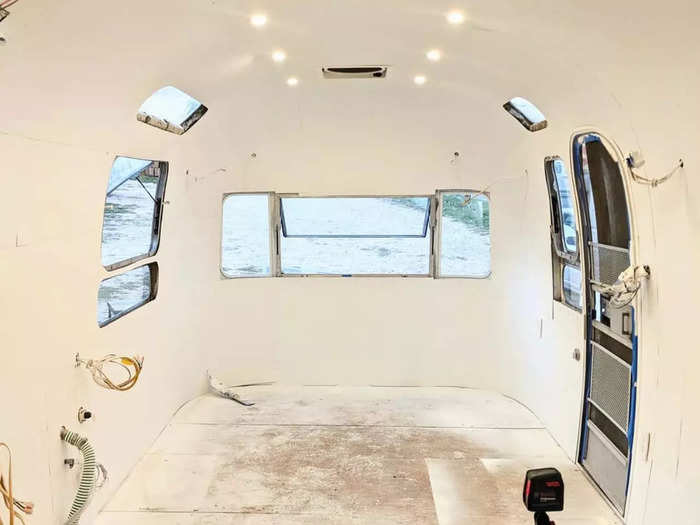
"We were doing a lot of research and planning, so getting really familiar with how materials perform and what can bend," Ballard said.
The couple relied on a carpentry technique known as scribing in order to get their cabinets fixed onto the curved walls of the vehicle, she said. In the technique, a compass is used to mark a line of waste material that needs to be cut or filed away so that the two uneven surfaces can fit together perfectly.
"We rebuilt everything from scratch, including the interior, so we really got familiar with working with the round corners," Ballard said.
The Airstream originally had a matte exterior, but the couple added a clear coat to make it look new.
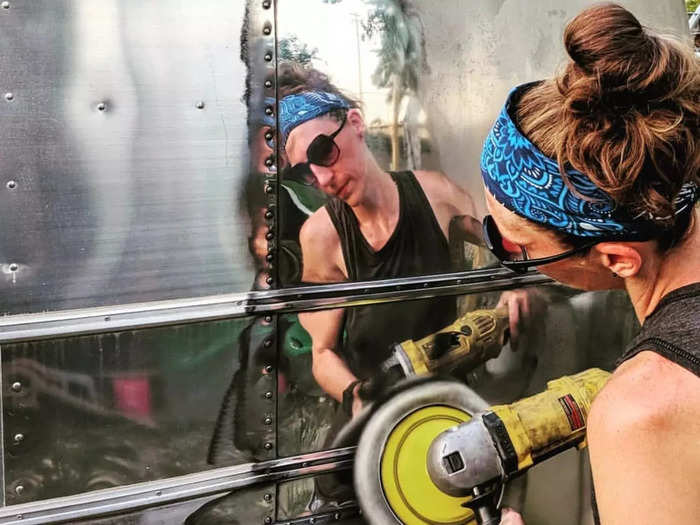
Ballard lost count of the amount of time she spent polishing the Airstream's exterior to remove corrosion and achieve the shiny, reflective finish.
"It took many, many hours of polishing to get it to that level. I stopped keeping track," Ballard added.
The couple built all the cabinets and partition walls on their own, relying on information gathered from tiny living and vehicle conversion forums online.
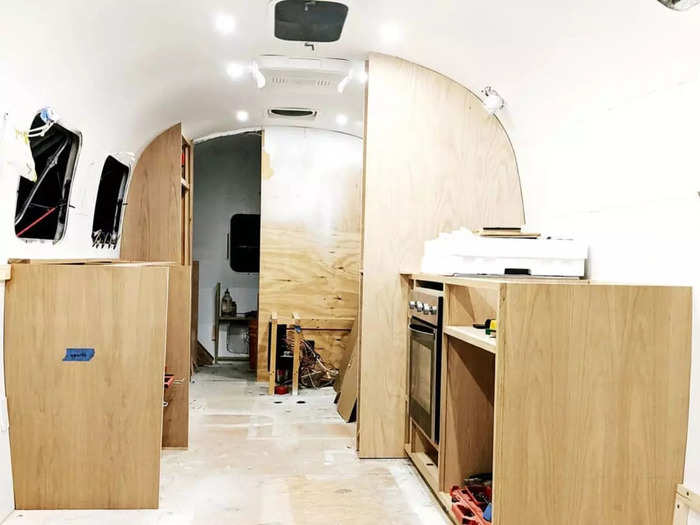
"It's really interesting to see these small, online communities of people who are willing to share their lessons learned. And we try to do that in return, sharing information when people ask," Ballard said
Apart from Airstream-specific communities, the couple also looked at van conversion forums to figure out how they could make their vehicle off-grid.
Since vans are smaller than Airstreams, those who are converting vans might also have different space-saving ideas that they could adopt, Suttles added: "We were just checking out all the techniques and tricks on how to sneak storage in wherever you can."
Despite the couple's experience with design, they've never done anything to this level of complication in terms of hands-on, DIY work.
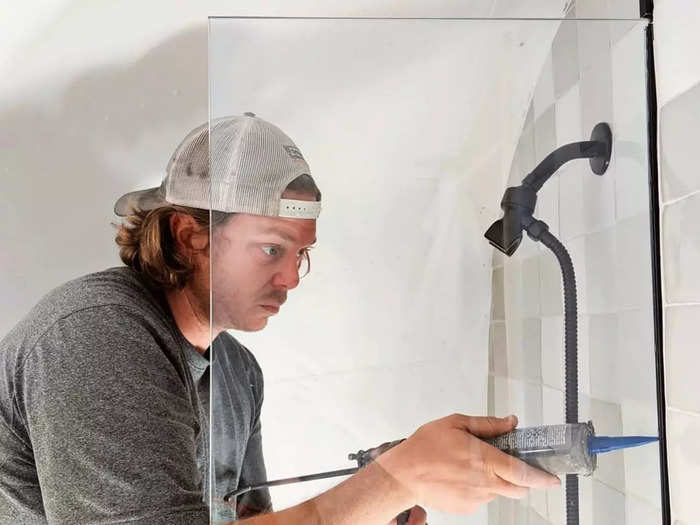
"We only had one contractor who helped us with the countertops and then we had somebody inspect the axles and the wheels to make sure it was roadworthy," Ballard said.
Everything else they completed themselves.
The couple took about 18 months to turn the Airstream into a tiny home. But they moved into the vehicle before it was completed.
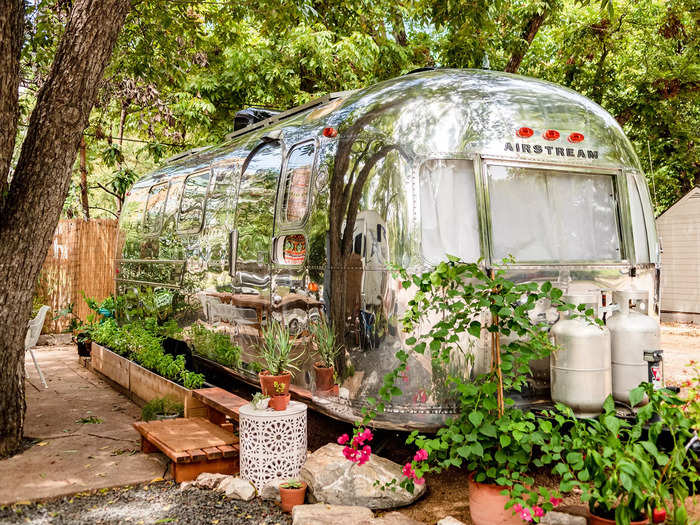
Ballard and Suttles started working on the Airstream in January 2019, about three months after they bought the vehicle.
Due to the pandemic, the couple gave up their rental apartment and moved into the Airstream in April 2020, even though it was only about 70% complete.
Although the vehicle was in a liveable condition by then, there was still some work left to do, such as building storage shelves and installing light fixtures.
Taking multiple breaks in between, the couple chipped away at the remaining tasks slowly.
It wasn't until March 2022 — when they finally got their sofa cushion covers made — that they officially deemed the project complete.
The 27-foot-long Airstream is parked in a lot near downtown Austin. It's roadworthy and fully equipped with off-grid capabilities.
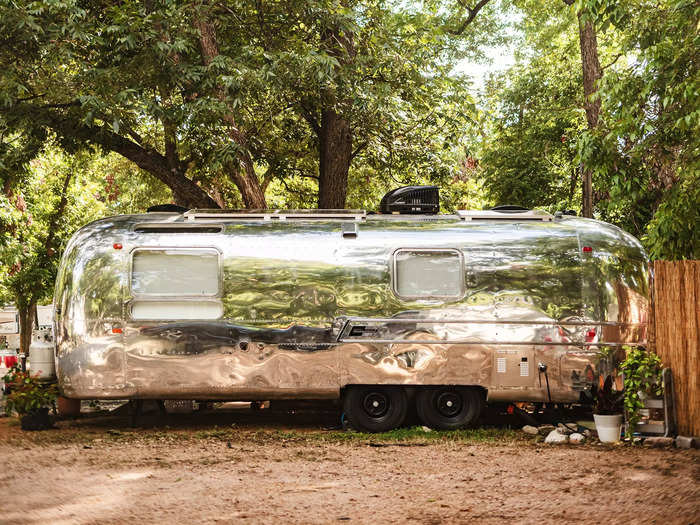
Although the Airstream is currently hooked up to a water and power supply, the couple can go off-grid whenever they want.
"We do have solar panels and we have water tanks that are underneath that we can fill," Ballard said. "And that'll last depending on how much water you use. It can last from three days to two weeks if you're really, really careful."
The Airstream has everything you would expect to find in a home, but on a smaller scale: a living area, a kitchenette, sleeping quarters, and a bathroom.
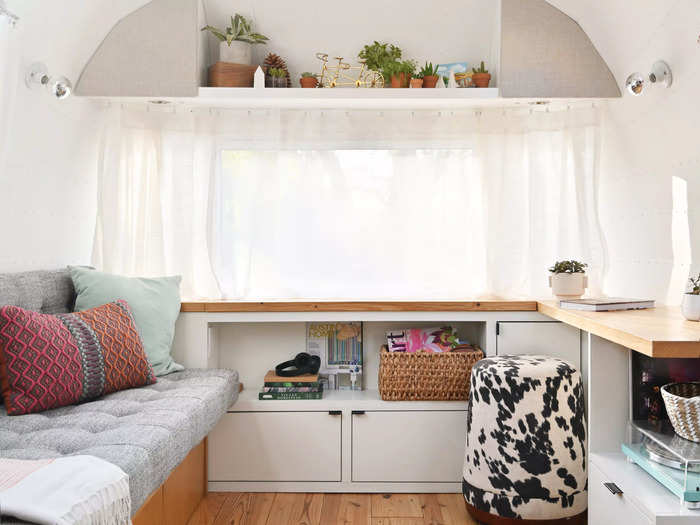
Ballard says that the best part of the entire process was the challenge of designing a home that reflected both their tastes and lifestyles.
"We had a lot of fun with it. It's like our little design lab," she added.
For Suttles, the best part was being able to learn new DIY skills. He now feels comfortable working with electricity, plumbing, and riveting.
"I didn't use to know how to rivet but there are so many rivets on this thing, like thousands. We learned how to do that too," Suttles said.
The two of them agree that the hardest part of the Airstream renovation process was the time commitment and stamina it took to complete it.
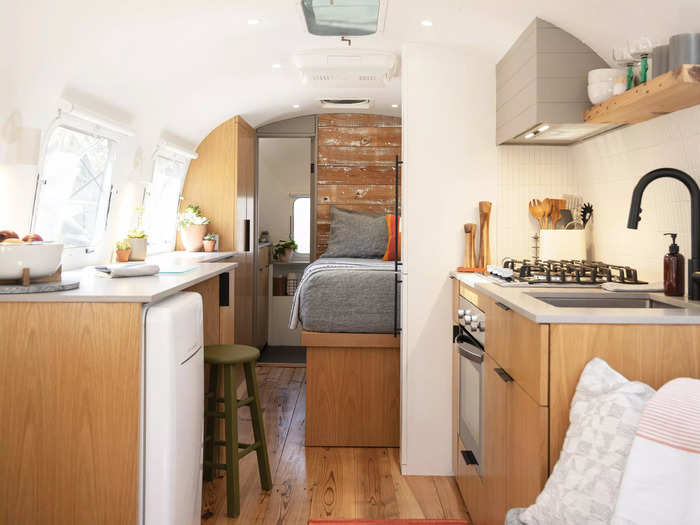
The process of figuring out what they needed to do and how they were going to do it was tough, Suttles said.
"We didn't know anything about plumbing, we didn't know anything about electricity," Suttles said. They found learning and executing those things difficult.
Another thing that the couple learned was to manage their expectations on how long the renovation process was going to take.
Since the Airstream is smaller than a regular house, it didn't seem like the project would take so long to complete — but it did, Ballard said.
After moving into the Airstream, the couple was able to adapt to tiny living fairly quickly, Ballard said: "It surprised us how easily we adapted and how much we liked it."
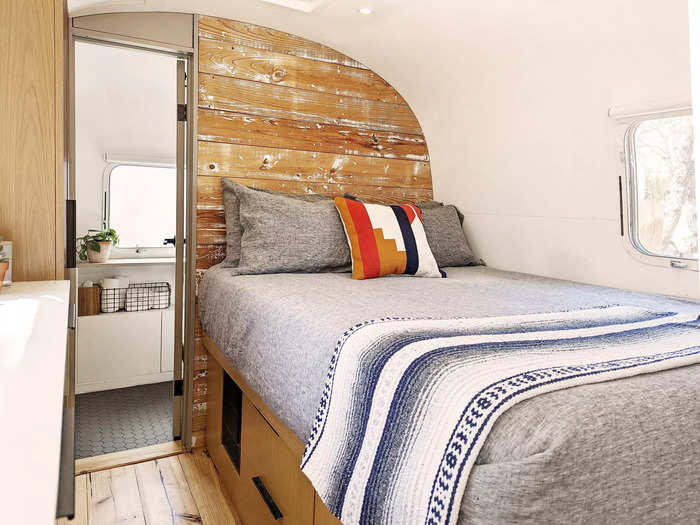
If they had to do it all again, the only thing that they would change about the design of their house is allocating space for a dishwasher, Ballard said.
Moving into their Airstream was a lifestyle choice that allowed them to live much more sustainably and economically, she said.
"We both have student loans," Ballard added. "Paul was able to pay down his student loans faster. I was able to take a little bit of time off of work and then start my own business. So it's given us a lot more flexibility in life."
The couple has some advice for other tiny home owners: Take the time to evaluate what fixtures and furniture are most crucial to your lifestyle.
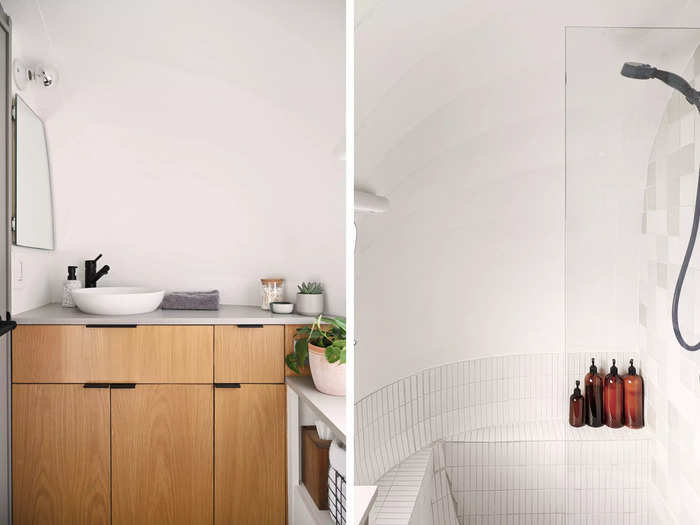
Ballard and Suttles each drew up their own floor plans before coming together to decide what they needed to prioritize in their tiny home.
"My floor plan represented what I held as important and her floor plan showed what she held important," Suttles said. That process allowed them to meet in the middle, he added.
"We prioritized our kitchen space to be larger than, say, our clothing storage. Whereas some people, they might want a larger closet because they never cook, so it's really like evaluating your own life," Ballard said.
The couple have set up a cozy outdoor space with some chairs, string lights, and a barbecue.
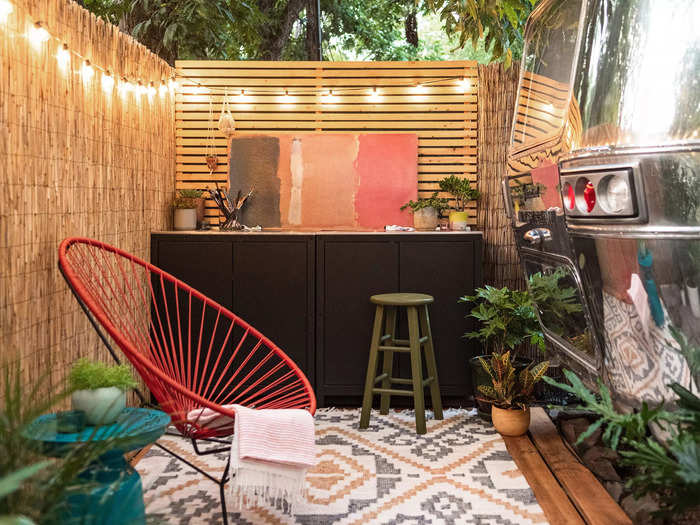
They also have some extra cabinets where they keep their tools and bikes, Ballard said: "We definitely would be overstuffed if we didn't have outdoor storage."
Popular Right Now
Popular Keywords
Advertisement